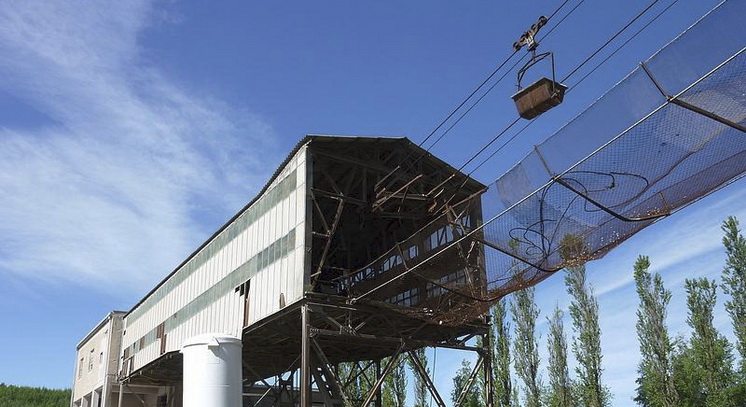Stones hovering above the countryside – Part 2

Anchoring and transport capacity
49 supports are placed on the route of the cableway, the biggest one is 40 metres tall (picture 5), and 8 anchoring and tensioning stations (picture 7). Because of easier manipulation, repairs, and maintenance, the load-bearing cable, with 45 mm in diameter on the full side and 35 mm on the empty side (the side with empty carts that go back to Černý Důl), is not in one piece. It is divided into sections that are divided by anchoring and tensioning stations.

Ideally, 265 carts move on its route with the speed of 3.15 m/s (picture 9). The cart weighs 450.0 kilogrammes and has the transporting capacity of 750 kg. It can transport around 800 tonnes of calcite in one shift. The distance between carts is around 63.0 metres. The carts are joined to the pulling cable, which is “infinite”, with a jaw and their own weight. This allows the connection of cart to the pulling cable and their loading or unloading without the necessity to stop the cableway.
Drive and controls of the cableway
Electric engine with the power of 130 kW that is placed in the loading station is the drive. Its task is to start the cable car, to give it the first impulse to move. Its task is also, taking into consideration the gravity of the cableway (the full side pulls on the empty side), to slow down the cableway to the desired speed of 3.15 m/s and at the same time make electricity for the needs of the operations of Černý Důl.

There are 3 people in charge of the controls of the cableway in the loading station: an engineer who starts and stops the cableway, checks its running with installed checking and measuring devices, a worker who loads the carts, and a worker who does the regular maintenance, regular cleaning of the workplace, and checks the reservoirs of calcite. There are two workers in the unloading station. One turns and secures carts after unloading of calcite into the hopper, controls the carts. And the other does the regular maintenance and cleaning of the workplace. All of these workers, in Černý Důl and in Kunčice take turns after one hour at these positions.
The controlling of the cableway is done through GSM network and SIM cards, the dispatchers communicate on phones or radio stations.
Legislation, controls, and monitoring
Apart from regular legal norms, the installation, maintenance, repairs and running of the cargo cableway corresponds to the norm ČSN 27 3205, valid from July 1, 1967. The norm determines the extent and dates of load-bearing cables checks (The damage “Z” of the protectors that envelops the inner tube), the load-bearing cables (the decrease of the diameter of the cable and the number of broken wires) and checks of supports, anchoring and tensioning stations, technical devices places in the stations etc.
During the running, the cable railway is checked by cameras that are placed at supports no. 14 and 33 and by a chip which is placed in every cart and captured at chosen supports. This system allows to inform the engineer about the potential loss of a cart on route or about other emergency issues.
Source: Lomy a těžba
